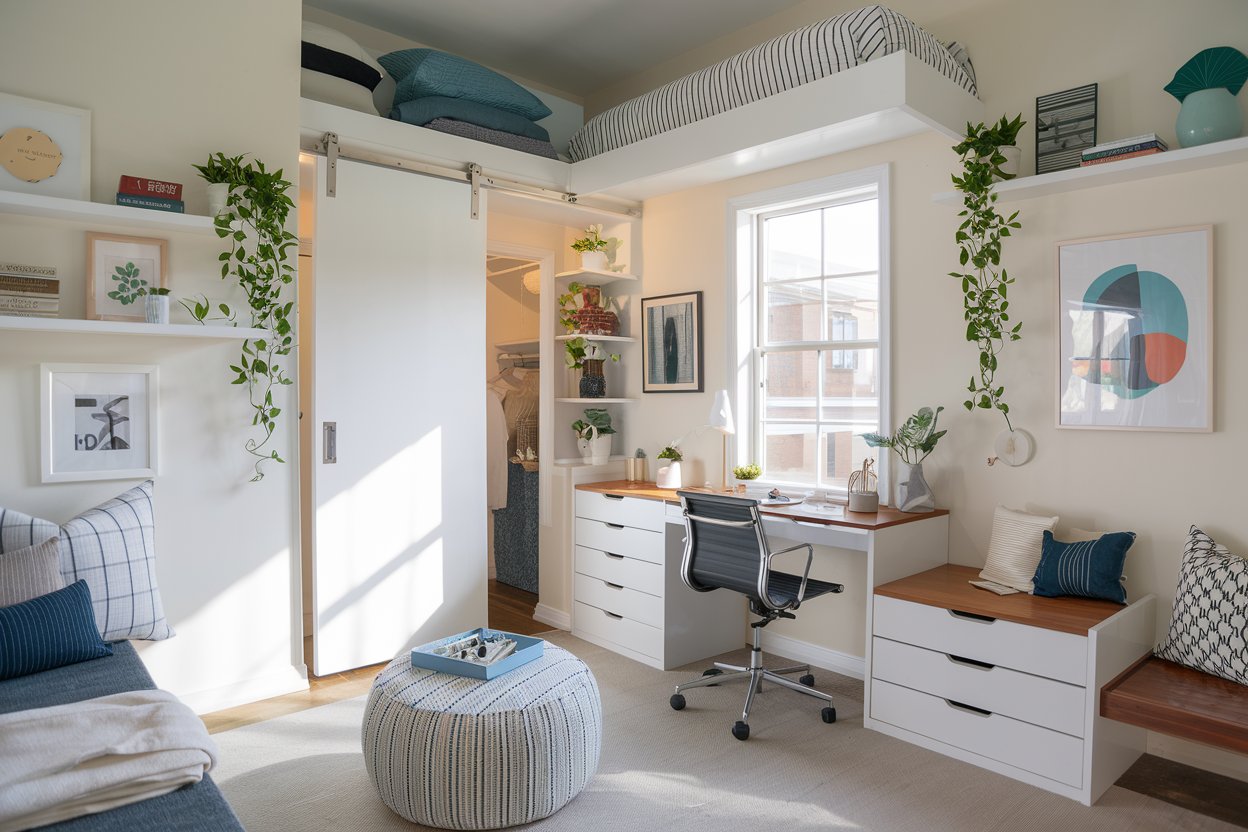
Your house feels like it’s shrinking. Maybe you’ve got kids turning the living room into a LEGO battlefield, or your home office is crammed into a closet. You want more space, but the idea of adding a whole new room sounds expensive and overwhelming. What if you could “hack” your existing space to feel bigger without breaking the bank? That’s where smart, budget-friendly small-space solutions come in. In this article, we’ll show you how to think like a pro—using the cost of a house addition as inspiration—to create clever upgrades that make your home feel spacious, functional, and totally you. No bulldozers required.
Get Creative with What You Already Have
Before you start knocking down walls, look around. That awkward nook under the stairs? It could be a cozy reading corner. The empty wall in the hallway? Perfect for floating shelves. Think of your home like a puzzle—every inch counts. For example, Sarah from Phoenix (who loves hosting game nights but has a tiny dining area) turned her unused garage corner into a mini lounge with a fold-out table and string lights. Total cost? Under $500. The trick is to repurpose spaces you’re ignoring. At HomeCrt, we’ve seen clients save thousands by reimagining their existing layouts instead of building new ones.
Multi-Functional Spaces Are Your Best Friend
Small spaces need to work harder. Imagine a Murphy bed that turns your guest room into a yoga studio by day, or a kitchen island that hides laundry machines inside. Julie, a teacher in Austin, added pull-out drawers under her staircase for shoe storage and a built-in desk. Now her “clutter zone” is a home office. Pro tip: Furniture that does double duty (like ottomans with storage or foldable desks) is gold. Check out Houzz for ideas—they’ve got tons of photos showing how real people make small areas multitask.
Budget-Friendly Materials That Look Expensive
You don’t need marble countertops to make a space feel luxe. Peel-and-stick tiles can mimic expensive backsplashes. Light-colored paint (eggshell white, soft gray) makes rooms feel airier. For floors, vinyl plank flooring is durable and way cheaper than hardwood. Let’s say you want a built-in bookshelf but can’t afford custom carpentry. Try stacking affordable IKEA shelves and adding trim to make them look built-in. HomeCrt’s blog has a step-by-step guide on this hack—it’s a fan favorite for renters and owners alike.
Know When to DIY and When to Call a Pro
Painting? Go for it. Rewiring electrical outlets? Maybe leave that to the experts. Small projects like installing shelving or updating cabinet hardware are perfect DIY wins. But if you’re dealing with plumbing, load-bearing walls, or permits, hiring a pro saves headaches (and money in the long run). For example, adding a skylight to brighten a dark room sounds simple, but improper installation can lead to leaks. Sites like HomeAdvisor can help you compare local contractor costs. At HomeCrt, we always recommend getting at least three quotes for bigger jobs.
So there you have it: expanding your home doesn’t mean you need to build an addition. By getting creative, choosing smart materials, and mixing DIY with pro help, you can transform cramped corners into functional, beautiful spaces. Start small—maybe tackle that underused closet or finally organize the garage. And remember, HomeCrt’s here with tips, guides, and a friendly ear if you hit a snag. Your dream space is closer than you think!





